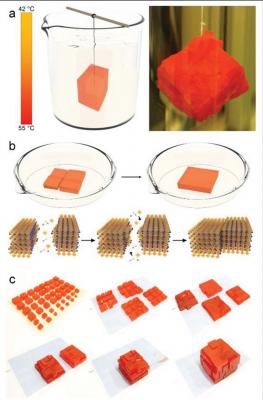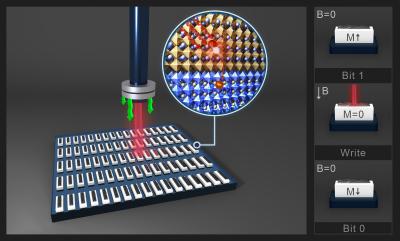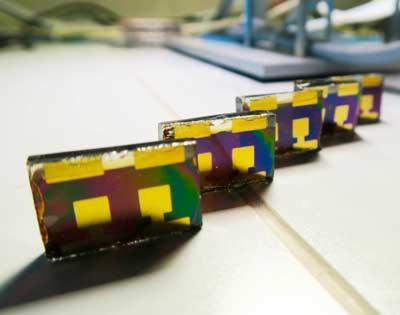![]() EPFL is a Switzerland-based technical university and research center. EPFL is focuses on three missions: teaching, research and technology transfer. EPFL works together with an extensive network of partners including other universities and institutes of technology, secondary schools and colleges, industry and economy, political circles and the general public.
EPFL is a Switzerland-based technical university and research center. EPFL is focuses on three missions: teaching, research and technology transfer. EPFL works together with an extensive network of partners including other universities and institutes of technology, secondary schools and colleges, industry and economy, political circles and the general public.
EPFL does extensive perovskite R&D work and is responsible for many publications and advancements in the field.
Route Cantonale
1015 Lausanne
Switzerland
The latest EPFL perovskite news:
EPFL team develops perovskite material that can detect gamma rays
Researchers at Ecole Polytechnique Fédérale de Lausanne (EPFL), assisted by teams at Croatia's University of Split, have developed a perovskite that can detect gamma rays.
 The 'oriented crystal'crystal growth' (OC2G) method of large MAPbBr3 crystals . a) Growing of large crystals by the suspended seed crystal; b,c) The consecutive steps of fusing together individual single crystals into a large crystal. Image by EPFL
The 'oriented crystal'crystal growth' (OC2G) method of large MAPbBr3 crystals . a) Growing of large crystals by the suspended seed crystal; b,c) The consecutive steps of fusing together individual single crystals into a large crystal. Image by EPFL
"This photovoltaic perovskite crystal, grown in this kilogram size, is a game changer," says EPFL's Professors Lászlo Forró. "You can slice it into wafers, like silicon, for optoelectronic applications, and, in this paper, we demonstrate its utility in gamma-ray detection."
EPFL team develops deposition method to overcome formamidinium issues
Metal halide perovskites are often made by mixing cations or halides with formamidinium (FAPbI3), to get high power-conversion efficiency in perovskite solar cells. But at the same time, the most stable phase of FAPbI3 is photoinactive, meaning that it does not react to light'the opposite of what a solar power harvester should do. In addition, solar cells made with FAPbI3 show long-term stability issues. Now, researchers led by Michael Grätzel and Anders Hafgeldt at EPFL, have developed a deposition method that overcomes the formamidinium issues while maintaining the high conversion of perovskite solar cells.
In the new method, the materials are first treated with a vapor of methylammonium thiocyanate (MASCN) or formamidinium thiocyanate FASCN. This innovative tweak turns the photoinactive FAPbI3 perovskite films to the desired photosensitive ones.
EPFL team uses perovskites to show how magneto-optical drives could be cheaper and faster than HDDs
Physicists at the Ãcole polytechnique fédérale de Lausanne (EPFL) in Switzerland have used perovskite materials to alter a magnetic bit's polarity with light, potentially opening the door to denser and faster disk drives using magneto-optical technology.

Researchers László Forró, Bálint Náfrádi, Péter Szirmai and Endre Horváth suggest magneto-optical drives using this method could be physically smaller, faster and cheaper than today's disk drives. They also say it is an alternative to heat-assisted magnetic recording (HAMR).
EPFL team reaches 23.5% efficiency of its perovskite solar cells using a stable composition of perovskite materials
Research by EPFL shows that a new engineered passivator, 4'tert'butyl'benzylammonium iodide (tBBAI), has bulky tert'butyl groups that prevent unwanted aggregation by steric repulsion. It was found that simple surface treatment with tBBAI significantly accelerates the charge extraction from the perovskite into the spiro'OMeTAD hole'transporter, while retarding the nonradiative charge carrier recombination.
This boosts the power conversion efficiency (PCE) of the PSC from '20% to 23.5%, reducing the hysteresis to barely detectable levels.
EPFL team reports on new method to enable rapid and stable production of perovskite solar cells
Researchers at EPFL in Switzerland have reported on the use of Flash Infrared Annealing (FIRA) to rapidly produce efficient, stable perovskite solar cells.
FIRA shares many characteristics with thermal annealing techniques already used to grow pure crystal phases for the semiconductor industry. It works by using a short IR pulse to rapidly nucleate a perovskite film from a precursor solution, without the need for a high-temperature scaffold. The high speed and relatively low processing temperatures mean that FIRA is compatible with large-area deposition techniques, like roll-to-roll processing. For PSCs, it could offer a practical route to scaling-up production.
International research team reaches 21.6% efficiency perovskite cell using concentrator PV
An international research team that included scientists from the University of Exeter, in the U.K., Switzerland's Ecole Polytechnique Federale de Lausanne (EPFL) and Saudi Arabia's Center of Excellence for Advanced Materials Research has reported hitting 21.6% perovskite solar cell efficiency by using concentrator photovoltaic technology.
 PSC with a concentrator
PSC with a concentrator
A triple-cation based, n-i-p structured perovskite cell has reportedly been developed at low levels of solar concentration. According to the researchers, standard single-junction perovskite cells usually reach efficiencies of 21% but only in devices smaller than 1mm2. 'The use of concentrator photovoltaics with a 0.81mm2-sized perovskite solar cell (PSC) further increased the efficiency levels up to 23.1% opening up a new line of research combining PSCs with low concentrating photovoltaic technologies,' the authors of the study wrote.
New approach to stabilize perovskite material may yield improved solar cells
An international research team, including scientists from Shanghai Jiao Tong University, the Ecole Polytechnique Fédérale de Lausanne (EPFL), and the Okinawa Institute of Science and Technology Graduate University (OIST), has found a stable that efficiently creates electricity and could be extremely beneficial for perovskite solar cells.
The researchers show how the material CsPbI3, an inorganic perovskite, has been stabilized in a new configuration capable of reaching high conversion efficiencies. This configuration is noteworthy as stabilizing these materials has historically been a challenge.
Perovskite solar cells' behavior under real-world conditions is tested - in the lab
Researchers at the lab of Anders Hagfeldt at EPFL, working with colleagues at the lab of Michael Grätzel, brought real-world conditions into the controlled environment of the lab. Using data from a weather station near Lausanne (Switzerland), they reproduced the real-world temperature and irradiance profiles from specific days during the course of the year, to test PSCs in real-world conditions.

With this approach, the scientists were able to quantify the energy yield of the devices under realistic conditions. 'This is what ultimately counts for the real-world application of solar cells," says Dr. Wolfgang Tress from EPFL.
Collaborative team focuses on MA to better understand perovskite PV stability issues
Researchers from the University of Fribourg and Ãcole Polytechnique Fédérale de Lausanne in Switzerland, Pandit Deendayal Petroleum University in India and Benemérita Universidad Autónoma de Puebla in Mexico have revealed new clues about the stability of perovskite thin films and solar cells.
'Our chief aim is to stabilize perovskite solar cells for many years and decades,' explains Michael Saliba, principal investigator at the Adolphe Merkle Institute, University of Fribourg. 'Without long-term stability, any commercialization efforts will fail.'
EPFL researchers develop a new way to achieve to high-performance, stable perovskite solar cells
Some of the key challenges for hybrid organic-inorganic perovskite solar cells are their limited stability, scalability, and molecular level engineering. Researchers at the Laboratory of Photonics and Interfaces (LPI) and Laboratory of Magnetic Resonance (LMR) at EPFL show how molecular engineering of multifunctional molecular modulators (MMMs) and using solid-state nuclear magnetic resonance (NMR) to investigate their role in double-cation pure-iodide perovskites can lead to stable, scalable, and efficient perovskite solar cells.
The objective of the team lead by Professor Grätzel (LPI), in collaboration with the group of Professor Lyndon Emsley (LMR) was to tackle the above-mentioned challenges through rational molecular design in conjunction with solid-state NMR, as a unique technique for probing interactions within the perovskite material at the atomic level. The team designed a series of organic molecules equipped with specific functions that act as molecular modulators (MMs), which interact with the perovskite surface through noncovalent interactions, such as hydrogen bonding or metal coordination. While hydrogen bonding can affect the electronic quality of the material, coordination to the metal cation sites could ensure suppression of some of the structural defects, such as under-coordinated metal ions.
Pagination
- Previous page
- Page 5
- Next page

